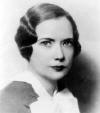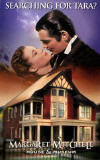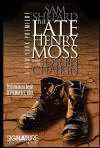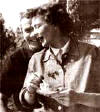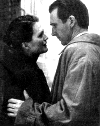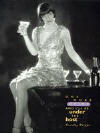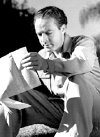 On December 10, 1905, screenwriter and novelist Dalton Trumbo was born to a family living in Montrose, Colorado. His father, Orus Bonham Trumbo, soon after moved the family to Grand Junction. There, in the blue-collar town a stone's throw from neighboring Utah, the elder Trumbo worked at several occupations--from shoe salesman to beekeeper--all without much success.
On December 10, 1905, screenwriter and novelist Dalton Trumbo was born to a family living in Montrose, Colorado. His father, Orus Bonham Trumbo, soon after moved the family to Grand Junction. There, in the blue-collar town a stone's throw from neighboring Utah, the elder Trumbo worked at several occupations--from shoe salesman to beekeeper--all without much success.
When young Trumbo entered high school, he began writing for the Daily Sentinel, the local newspaper. He entered the University of Colorado in 1924, but when his father died the following year, he moved to Los Angeles to help support his mother and two younger sisters. He worked for nine years on the night shift at a bakery, leading him to observe, "I never considered the working class anything other than something to get out of."
While working evenings, Trumbo also enrolled in classes at the University of California and at the University of Southern California. His first stories and essays appeared in Vanity Fair, and in 1932, he began contributing to the film magazine, the Hollywood Spectator. Trumbo left the bakery business for good when the magazine offered him a position as managing editor.
 Trumbo's debut as a novelist came with the publication of Eclipse in 1935. It was a satire in the spirit of Sinclair Lewis's Babbitt (1922) about a self-made businessman, John Abbott, who challenged a backward and introverted society. The work was a thinly veiled satire of life in Grand Junction as Trumbo saw it. That same year, he was hired as a reader and a screenwriter by Warner Brothers, and his star was on the rise.
Trumbo's debut as a novelist came with the publication of Eclipse in 1935. It was a satire in the spirit of Sinclair Lewis's Babbitt (1922) about a self-made businessman, John Abbott, who challenged a backward and introverted society. The work was a thinly veiled satire of life in Grand Junction as Trumbo saw it. That same year, he was hired as a reader and a screenwriter by Warner Brothers, and his star was on the rise.Trumbo wrote 21 screenplays in the next six years, many of them low-budget remakes for the B-picture units at Warner Brothers, Columbia, and RKO. Trumbo's adaptation of Christopher Morley's novel, Kitty Foyle, a story about a working girl and her troubled love life, won an Oscar nomination.
 Despite his success as a screenwriter, Trumbo was determined to become a first-rate novelist. The inspiration for his anti-war epic, Johnny Got His Gun, came after he'd read an article about a British officer who had been gravely disfigured in World War I. The story covers the thoughts of a soldier who has lost his arms, legs, face, sight, and hearing and decides to become an educational exhibit about the horrors of war. He believes that the people who come to see him "would learn all there was to know about war. That would be a great thing, to concentrate war in one stump of a body and to show it to people so they could see the difference between a war that's in newspaper headlines and liberty loan drives and a war that is fought out lonesomely in the mud somewhere, a war between a man and a high explosive shell."
Despite his success as a screenwriter, Trumbo was determined to become a first-rate novelist. The inspiration for his anti-war epic, Johnny Got His Gun, came after he'd read an article about a British officer who had been gravely disfigured in World War I. The story covers the thoughts of a soldier who has lost his arms, legs, face, sight, and hearing and decides to become an educational exhibit about the horrors of war. He believes that the people who come to see him "would learn all there was to know about war. That would be a great thing, to concentrate war in one stump of a body and to show it to people so they could see the difference between a war that's in newspaper headlines and liberty loan drives and a war that is fought out lonesomely in the mud somewhere, a war between a man and a high explosive shell."Trumbo made his debut as a film director when he later turned the story into a movie. It won several awards at Cannes but did poorly at the box office in the U.S.
In 1938, Trumbo married Cleo Fincher. They bought a ranch, named the Lazy T, at Lockwood Valley, a short drive from Hollywood. During World War II, he served as a war correspondent with the U.S. Army Air Force. In his script, Thirty Seconds over Tokyo, starring Spencer Tracy (1944), he managed to tell a lavish story without the racist tones so prevalent in the day.
 Trumbo joined the Communist party in 1943. He said the meetings were "dull beyond description, about as revolutionary in purpose as Wednesday-evening testimonial services in the Christian Science Church." Nonetheless, his experimentation in social awareness eventually cost him dearly. In 1947, he was summoned before Joseph McCarthy's House UnAmerican Activities Committee (HUAC) to answer questions about the pervasiveness of communism in Hollywood. He refused to cooperate and was cited for contempt of Congress. He was convicted of the charge and, as a member of the "Hollywood Ten," spent nearly a year in a federal prison in Kentucky. Afterwards, he sold his ranch and moved to Mexico, where he continued to write scripts under various pseudonyms.
Trumbo joined the Communist party in 1943. He said the meetings were "dull beyond description, about as revolutionary in purpose as Wednesday-evening testimonial services in the Christian Science Church." Nonetheless, his experimentation in social awareness eventually cost him dearly. In 1947, he was summoned before Joseph McCarthy's House UnAmerican Activities Committee (HUAC) to answer questions about the pervasiveness of communism in Hollywood. He refused to cooperate and was cited for contempt of Congress. He was convicted of the charge and, as a member of the "Hollywood Ten," spent nearly a year in a federal prison in Kentucky. Afterwards, he sold his ranch and moved to Mexico, where he continued to write scripts under various pseudonyms.
Ian McLellan Hunter said that Trumbo wrote the original story for William Wyler's film, Roman Holiday (1953), starring Audrey Hepburn and Gregory Peck. "He asked me to front for him," Hunter later said. Hunter received an Academy Award for the story and turned his fee from Paramount over to Trumbo.
This blacklisting is going to collapse because it is rotten, immoral and illegal. I am one day going to be working openly in the motion picture industry. When that day comes, I swear to you that I will never sign a term contract with any major studio. I will, proudly and by preference do at least one picture a year for King Brothers, and I will try to make it the best picture that I have it in me to do." - from Trumbo's letter to the King Brothers, in The Penguin Book of Hollywood, ed. by Christopher Sylvester, 1998
This blacklisting is going to collapse because it is rotten, immoral and illegal. I am one day going to be working openly in the motion picture industry. When that day comes, I swear to you that I will never sign a term contract with any major studio. I will, proudly and by preference do at least one picture a year for King Brothers, and I will try to make it the best picture that I have it in me to do." - from Trumbo's letter to the King Brothers, in The Penguin Book of Hollywood, ed. by Christopher Sylvester, 1998
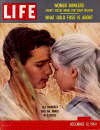 With the help of director Otto Preminger, Trumbo broke off the blacklist in 1959 and was hired to write the screenplay for Exodus, based on Leon Uris's bestseller. More screenwriting credits came with The Sandpiper, perhaps better remembered for its song The Shadow of Your Smile than for its stars, Elizabeth Taylor and Richard Burton. Another Trumbo film, Hawaii (1966), was based on James Michener´s best-selling novel.
With the help of director Otto Preminger, Trumbo broke off the blacklist in 1959 and was hired to write the screenplay for Exodus, based on Leon Uris's bestseller. More screenwriting credits came with The Sandpiper, perhaps better remembered for its song The Shadow of Your Smile than for its stars, Elizabeth Taylor and Richard Burton. Another Trumbo film, Hawaii (1966), was based on James Michener´s best-selling novel.In a 1970 speech to the Screenwriters Guild, Trumbo reflected upon the horrible years of the House UnAmerican Activities Committee investigations and of Hollywood blacklisting.
"The blacklist was a time of evil, and that no one on either side who survived it came through untouched by evil. Caught in a situation that had passed beyond the control of mere individuals, each person reacted as his nature, his needs, his convictions, and his particular circumstances compelled him to. There was bad faith and good, honesty and dishonesty, courage and cowardice, selflessness and opportunism, wisdom and stupidity, good and bad on both sides.
 "When you who are in your forties or younger look back with curiosity on that dark time, as I think occasionally you should, it will do no good to search for villains or heroes or saints or devils because there were none; there were only victims. Some suffered less than others, some grew and some diminished, but in the final tally we were all victims because almost without exception each of us felt compelled to say things he did not want to say, to do things that he did not want to do, to deliver and receive wounds he truly did not want to exchange. That is why none of us - right, left, or centre - emerged from that long nightmare without sin."
"When you who are in your forties or younger look back with curiosity on that dark time, as I think occasionally you should, it will do no good to search for villains or heroes or saints or devils because there were none; there were only victims. Some suffered less than others, some grew and some diminished, but in the final tally we were all victims because almost without exception each of us felt compelled to say things he did not want to say, to do things that he did not want to do, to deliver and receive wounds he truly did not want to exchange. That is why none of us - right, left, or centre - emerged from that long nightmare without sin."The tumultuous life of Dalton Trumbo came to an end on September 10, 1976, when he died of a heart attack.
Copyright 2010 AmSAW




